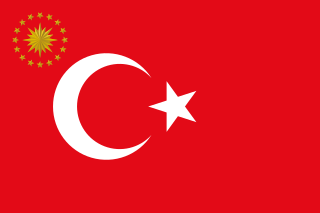
The president of Turkey, officially the president of the Republic of Türkiye, is the head of state and head of government of Turkey. The president directs the executive branch of the national government and is the commander-in-chief of the Turkish military. The president also heads the National Security Council.

The president of Iceland is the head of state of Iceland. The incumbent is Guðni Thorlacius Jóhannesson, who is now in his second term as president, elected in 2016 and re-elected in 2020.

The Constitution of the Irish Free State was adopted by Act of Dáil Éireann sitting as a constituent assembly on 25 October 1922. In accordance with Article 83 of the Constitution, the Irish Free State Constitution Act 1922 of the British Parliament, which came into effect upon receiving the royal assent on 5 December 1922, provided that the Constitution would come into effect upon the issue of a Royal Proclamation, which was done on 6 December 1922. In 1937 the Constitution of the Irish Free State was replaced by the modern Constitution of Ireland following a referendum.

Óscar Raymundo Benavides Larrea was a Peruvian field marshal, diplomat, and politician who served as the 38th and 42nd President of Peru.

Manuel Carlos Prado y Ugarteche was a Peruvian politician and banker who served twice as President of Peru. Son of former president Mariano Ignacio Prado, he was born in Lima and served as the nation's 43rd (1939–1945) and 46th (1956–1962) president. His brother, Leoncio Prado Gutiérrez, was a military hero who died in 1883, six years before Manuel Prado was born.

Mariano Ignacio Prado Ochoa was a Peruvian army general who served as the 17th and 21st President of Peru.

José Balta y Montero was a Peruvian soldier and politician who served as the 19th President of Peru from 1868 to 1872. He was the son of John Balta Bru and Agustina Montero Casafranca.

José María Medina Castejón served as the President of Honduras three times during the 1860s and 1870s. Medina was born in Sensenti. While his father is not known, his mother's name was Antonia Medina Castejón.

The current Constitution of the Syrian Arab Republic was adopted on 26 February 2012, replacing one that had been in force since 13 March 1973. The current constitution designates the state's government as a "democratic" and "republican" system. It determines Syria's identity as Arab and describes the country as a part of the wider "Arab homeland" and its people as an integral part of the Arab nation. The constitution supports the Pan-Arab programme for co-operation with other Arab nations to eventually achieve Arab Union.

The Constitution of Egypt has passed over a long period of evolution from the liberal constitution of 1923 to the contemporary constitution.
This electoral calendar 2006 lists the national/federal direct elections held in 2006 in the de jure and de facto sovereign states and their dependent territories. Referendums are included, although they are not elections. By-elections are not included.

The Constitution of Peru is the supreme law of Peru. The current constitution, enacted on 31 December 1993, is Peru's fifth in the 20th century and replaced the 1979 Constitution. The Constitution was drafted by the Democratic Constituent Congress that was convened by President Alberto Fujimori during the Peruvian Constitutional Crisis of 1992 that followed his 1992 dissolution of Congress, was promulgated on 29 December 1993. A Democratic Constitutional Congress (CCD) was elected in 1992, and the final text was approved in a 1993 referendum. The Constitution was primarily created by Fujimori and supporters without the participation of any opposing entities.

Juan Lizardo Montero Flores was a Peruvian soldier and politician who held the provisional Presidency of Peru from 1881 to 1883, replacing President Francisco García Calderón, during the Chilean occupation of Peru that took place as a result of the War of the Pacific. He was also Mayor of Lima for a brief period, in 1879.

According to the Organic Law of Regional Governments, the regions are, with the departments, the first-level administrative subdivisions of Peru. Since its 1821 independence, Peru had been divided into departments but faced the problem of increasing centralization of political and economic power in its capital, Lima.

The Constitutional Declaration of 2011 was a measure adopted by the Supreme Council of the Armed Forces of Egypt on 30 March 2011. The declaration was intended to serve as the fundamental law of the country pending the enactment of a permanent constitution, following the resignation of President Hosni Mubarak on 11 February.

A referendum on José María Medina remaining President was held in Honduras on 26 March 1870. The proposal was approved by 95.15% of the voters. However, two years later he was ousted from power after a revolt by the Liberals.

The Provisional Constitution of the Federal Republic of Somalia is the supreme law of Somalia. It provides the legal foundation for the existence of the Federal Republic and source of legal authority. It sets out the rights and duties of its citizens, and defines the structure of government. The Provisional Constitution was adopted on August 1, 2012 by a National Constitutional Assembly in Mogadishu, Banaadir.

The National Board of Justice, formerly the National Council of the Magistrature, is an autonomous constitutional institution that is part of the Republic of Peru. Its primary function is to appoint and ratify all judges and prosecutors in the Peruvian justice system as well as to remove those that fail to fulfill their responsibilities.

Manuel María Gálvez Egúsquiza was a Peruvian lawyer, magistrate, university professor and politician.


















